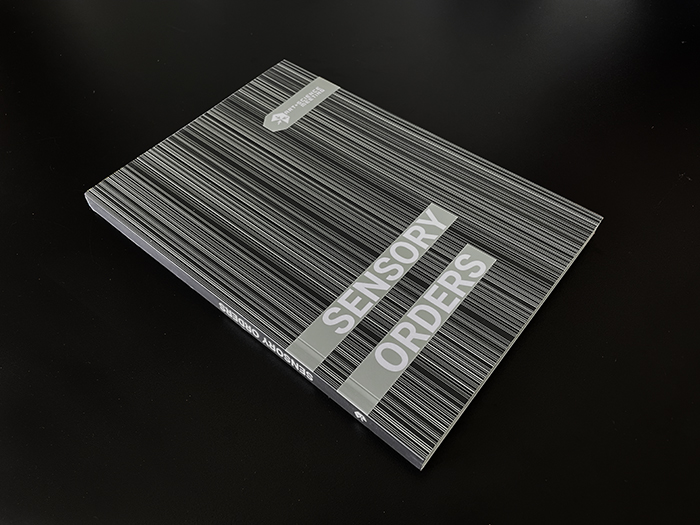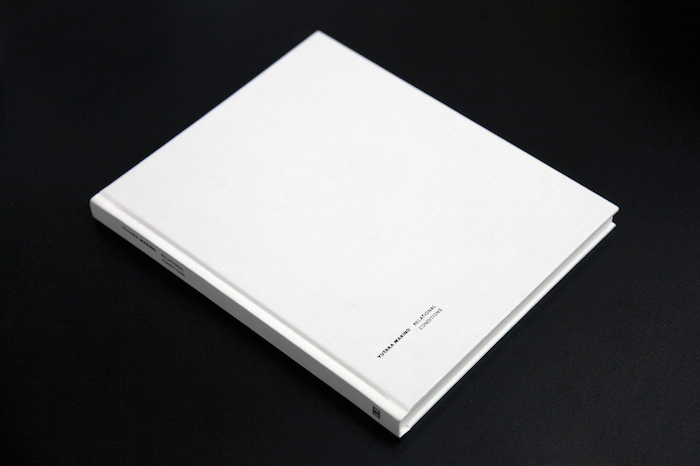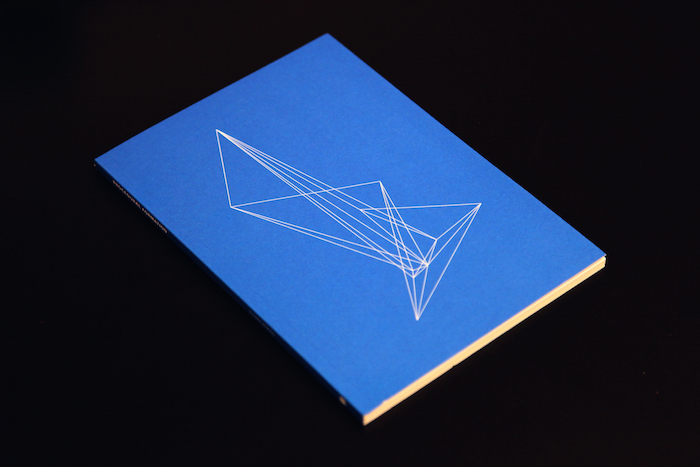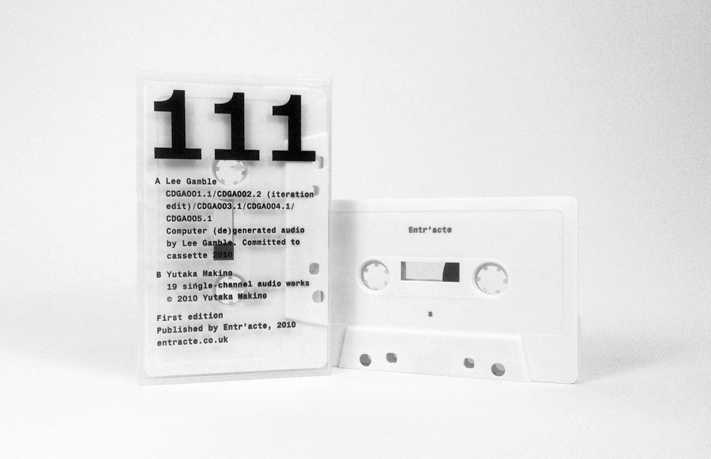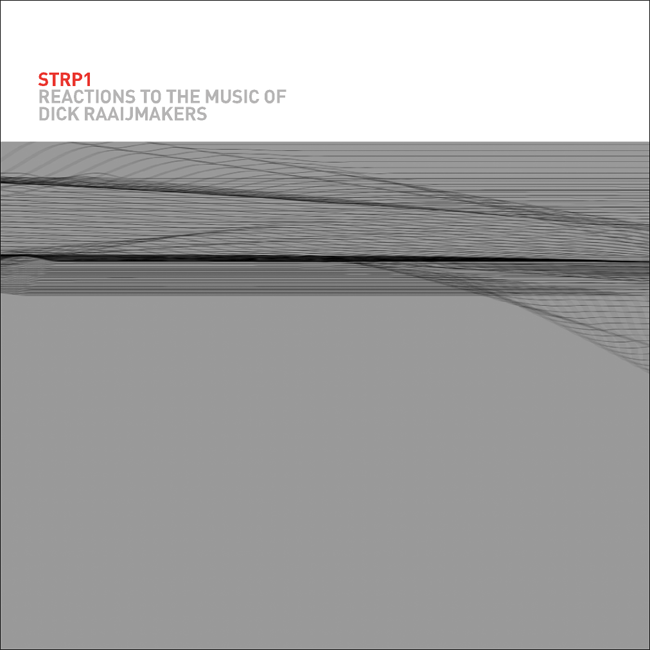|
| CURRENT |
| WORKS |
| PUBLICATIONS |
| BIOGRAPHY |
| CONTACT |
PUBLICATIONS |
||||
|
||||
Extended Spaces — Resonant Bodies: Alvin Lucier |
Type: Group Exhibition Catalog
The festival »Extended Spaces — Resonant Bodies: Alvin Lucier« embarks on the traces of the American composer Alvin Lucier, who passed away in December 2021. It is both a tribute and an explicitly contemporary project – an homage to the composer, who remained artistically active into old age and was always open to new contexts. The program consists of three parts: sound installations, concerts and performances and a conference. It focuses on Lucier's revolutionary musical and compositional concepts and their significance for contemporary compositional practice. To this end, it links the beginnings of Lucier's experimental music and instrumental compositions with current artistic positions. |
|||
|
|
||||
Sensory Orders |
Type: Group Exhibition Catalog
|
|||
|
||||
Relational Conditions |
Type: Monographic Catalog
"Wer sich wie Yutaka Makino mit Räumen beschäftigt inklusive deren audiovisueller Ausstattung, der darf von einem Buch über die Kunst des 1976 in Japan geborenen, heute in Berlin lebenden Musikers nicht zu viel erwarten. Das Zweidimensionale, Schriften wie Bilder können naturgemäß nur Einblicke geben. Die ganze Tragweite von Makinos Environments kann letztlich nur vor Ort adäquat, sprich ganzheitlich, erfahren werden. Mit anderen Worten: Es kann bei einer Publikation über Klangkunst nicht darum gehen, diese getreu abzubilden, das heißt zu verdoppeln mit Ton und Bild. Es kann nur um Annäherungen gehen, durchaus auch um etwas, das sich der unmittelbaren Erfahrung entzieht: um Hintergründe, um Erfahrungsberichte, um Erklärungen besonderer Phänomene. Dem Buch aus dem Hause Kehrer gelingt all das vorzüglich. In der Art eines Ausstellungskatalogs geben sehr gute Texte und faszinierende Fotografien weit mehr als nur schale Eindrücke. Stets sind die Autoren nah dran an der Kunst. Betont subjektiv beschreibt Chris Slater sechs Räume, die Makino ausstattete. Wahrnehmungs-Irritationen kommen zur Sprache, die der Künstler durch vollkommene Finsternis erreicht, durch dichten Nebel oder durch besondere akustische Environments mithilfe von Richtlautsprechern. Solche besonderen Phänomene steuert Makino bewusst an. Im ergiebigen Interview mit der Herausgeberin des Buches, Julia Gerlach, fasst er seine Absichten so zusammen: «Meine jüngeren Arbeiten sind auf unterschiedliche Weise auf den Wahrnehmungsprozess selbstausgerichtet. Ähnlich wie bei der Verwendung von Sinus- und Sägezahnschwingungen als klangliche Materialien sind die visuellen Elemente reduziert und referenzlos. Weniger ist mehr, wenn man es mit sensorischem Input zu tun hat und die eigene Wahrnehmung reflektieren möchte » (S. 98). Ein weiteres Plus des 112-seitigen Buchs ist der Ton fernab so mancher werbeartiger Hochglanzprodukte größerer Ausstellungshäuser. Die erfahrene Autorin Rahma Khazam, die sich insbesondere auf Klang und Architektur spezialisiert hat, spricht nicht wie üblich von «überwältigenden Innovationen», sondern betont stattdessen die Nähe von Makinos Ästhetik zu der des Lichtkünstlers James Tunell und zu Michael Ashers schallschluckender Installation für die Ausstellung «Spaces», die dieser Ende der 1960erJahre zeigte (S. 70). Neben den historischen Praxisbezügen sind auch die Ausflüge zu den Experimenten und Gestalttheorien des späten 19. und frühen 20.Jahrhunderts aufschlussreich. Die Kulturwissenschaftlerin Rebekka Ladewig schildert diese und kommt zu dem Schluss, dass Makinos künstlerische Absicht darin bestehe, durch seine besonderen Atmosphären «Desorientierung» zu schaffen - eine Desorientierung, die einer gezielten «psychophysischen Manipulation » entspricht (S. 80/81). Das alles ist gut nachvollziehbar, und am Ende bleibt nur ein Wunsch, die Atmosphären eines Künstlers live zu erleben, der offenbar mehr macht als bloß - wie heißt es so schön - «spannende» Dinge." |
|||
|
|
||||
Differential Relations |
Type: Artist Book
|
|||
|
|
||||
Procedural Formation |
Type: Artist Book |
|||
|
|
||||
Lee Gamble / Yutaka Makino
|
Type: Cassette Tape
"Une cassette split, deux faces, deux auteurs. Lee Gamble avec de l'audio numérique fortement altéré. Ça sonne comme des prises de sons extérieures privées de leur contexte et brimées par des filtres abusifs. Yutaka Makino et initialement une pièce pour 19 pistes où l'électronique prends la forme d'électrons libres, autonomes et dynamiques. Excellente cassette d'une musique électronique vivifiante." "The pick of the bunch is Gamble & Makino’s split tape. Gamble follows on from his excellent Entr’acte album Join Extensions. His emphasis is on choppy, granular frequency storms, subjected to ongoing and sudden change, the rhythm of the sound incidents from time to time threatening to cohere into discernible patterns. It’s not all volatility, though — CDGA002.2 (iteration edit) studiously tweaks jittery rhythmic pulses. Yutaka Makino operates in a similar area but uses different structures, cramming 19 tracks into 15 minutes. The three longer tracks are more or less stable, modulating gritty click-tones and fuzzy tonal masses. The bulk of the remainder clock in under 30 seconds and dabble in a range of approaches: pitch-twisting and shredding, noise barrages and tonal oscillations, among others." |
|||
|
|
||||
Black |
Type: CD
"This is not the first project with a black artwork. Here, however, black abounds. In addition to the outer carton which presents the word 'Black' in an impeccably neutral relief, there's also the black inlay card of the CD trailer underneath the transparent plastic trailer, the black booklet, and the black CD itself. Japanese artists - generally speaking- are quite meticulous in conceptualisation and implementation. Yutaka Makino, in this case, confirms the rule, with a design that is purposefully ultra-minimal and very stylised. The structuring of the work into 30 tracks reveals the author's interest in pursing 'extreme' attitudes. The track list includes some very short pieces (one is only 11 seconds long) and others between one and two minutes long. Sounds have a strong 'granular' matrix structure, and they are all recorded in mono and with a limited range of frequencies and timbers. This makes heavy reference to machinic aesthetics, where the author's ability lies precisely in setting parameters and algorithms. It is the scientific background of Yutaka Makino that pushes the artist in this direction, and the result, albeit restrained by so much rigor, reverberates a rare sensibility. So the 'machines are restless tonight' and not even all the black here can calm them down." |
|||
|
|
||||
Vijf Canon |
Type: Compilation CD
"STRP is based in the technological area of Eindhoven. Strijp-S, the characteristic industrial inheritance from Philips, forms the cradle of this region. On this spot revolutionary inventions which have had an enormous impact on several art forms, were realized. Electronic music composer Dick Raaijmakers completed the first electronic music album almost 50 years ago at Strijp-S. His work has been remixed or reinterpretated by renown contemporary musicians from different scenes. The result of it has brought out on this cd." |
|||
![]()
Copyrights © 2005 - 2022 Yutaka Makino. All Rights Reserved.


